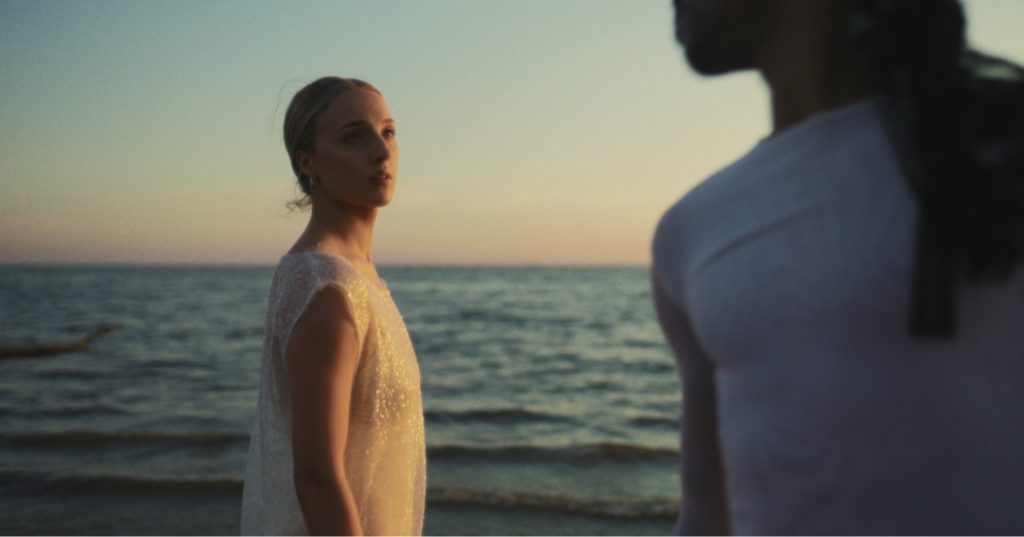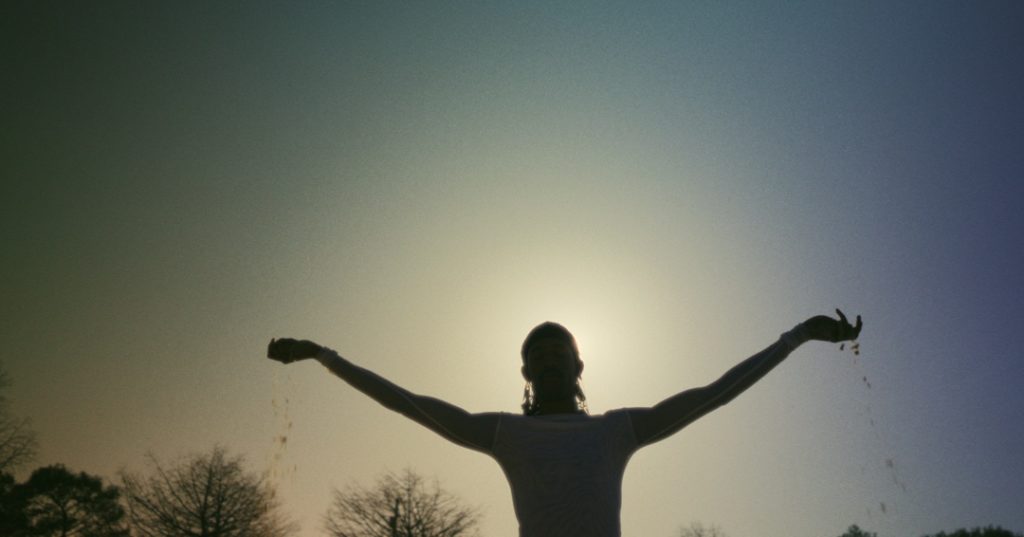Conducted by Maxine Flasher-Düzgüne?.
“Life is fleeting…especially if you are a ‘Damselfly’ living only for a few brief moments as a free-flying adult. With the essence of grievance slippery and intangible, every loss is unique, and tells its own story,” says Elizabeth Rose Arifien, director, choreographer and producer of Damselfly, a dance film set in Fontainebleau, New Orleans, and supported by Arts Council England. Arifien’s history as a movement filmmaker often falls into a place without words, set to the natural rhythms of the biosphere and the patches of our lifetime that slip in and out of dreams. In the following interview, she speaks about her inspiration and process behind her creative work and what it means to choreograph for the camera.
What and/or who drew you to dancing?
The last scene in Dirty Dancing where Patrick Swayze jumps off the stage and rallies his co-workers/performers struck me so hard. The power a group of people have when they work together is powerful and I have always rallied people to make change through dance. Also, who didn’t love Patrick Swayze! I was enrolled in ballroom and latin dance sessions around this time and I was very disappointed not to be moving like the group did. I did however end up competing for the UK and coming second on a few occasions from the age of 8+. The Blackpool Tower holds some special memories for me.
I used to watch films like Grease and Dirty Dancing on repeat and wanted to dance like them. It was such an incredible escapism and it brought us together as a family. There was always singing and dancing in my house growing up.
My mum had thought it to be good for me to do something of a physical nature, as opposed to the classroom scenario, due to my diagnosis of dyslexia and ADHD.

How do you approach language in your work as an artist?
In my films I haven’t really, language has always been a blockage for me. I use feelings and intuition to create and I trust what comes from that place of freedom where limitations or constraints from written language might hold me back.
When creating song lyrics I have to go to that same quiet place I do when dancing and I freestyle to a beat and begin to form the song this way. It’s a really natural process between myself and the producer. I usually bring the samples for us to use too and this also helps form the track. It is all very collaborative.
I have a podcast called Move Beyond Words where we speak to different creatives who are Neurodivergent and the conversations are always very natural… Well, in Series Two conversations are. Series Two flows much smoother as we were in person and Charlotte Edmonds and I speak to the likes of Choreographer Corey Baker, chair of Southbank Centre and Vogue photographer Misan Harriman, Artist Lu Williams, Actor from Emmadale Micheal Parr, Sex educator Ruby Rare,TV Presenter, founder of Glassett and Hooste, Laura Jackson and other inspiring creatives who happen to be Neurodivergent.
What are some ways that film has served your choreographic vision?
Firstly, I remember seeing dance on film initially. This film opened with water dripping down someone’s hand as they lay in the bath and then we slowly began to be invited into witnessing more of the body moving. Seeing the body so close and how it moved with the camera stuck with me. I remember watching and thinking, this is it, I know what I want to do, I want to tell stories with my body. I had never been exposed to art films like this before and my world just exploded. I felt like my way of experiencing and seeing the world was being understood for the first time in these “arty films”.
Choreography is an expression of how I feel music. It’s a call and response, and the two disciplines come hand in hand for me. Processing my emotions through the medium of dance often means that the story behind my choreographic films is seldom linear. So I usually film all ideas first and then create the story afterwards.
I’ve always made my own work, and film allows for you to be expressive even when you don’t have paid work lined up. It’s widely accessible, enduring and long lasting.
Due to having memory ‘black outs’ when I would perform, I have come to love film as it helps me to remember exactly what I have created and often substitutes as my memory bank.
Can you describe what your creative process was like in Damselfly?
The process was very ad-hoc. The song came really quite naturally after Tony Nwachukwu (producer of Attica Blues, Mo Wax) and I worked on the track together. I’d initially planned to travel abroad to work with one of Solange Knowles’ choreographers, but the pandemic had put an end to our desired timeline. In the end there was a 2 week window of availability between both myself and Maya Taylor; and I decided to head out despite the chance she may have to leave for LA.
I locked in a director who was able to help produce the shoot but I received the news he was unable to shoot due to a higher paying job as I landed in New Orleans. I then had 10 days to pull a shoot together in a city I had never been to. I had cast two wonderful dancers with the support of Maya and I began rehearsals fully focused and knew I would make it happen, and thankfully I did. Instagram is such a brilliant resource. I met Alejandro (DOP) and we began shaping the team from there.
What do you believe is missing in the arts?
Money and respect for the work we do and how much the arts benefit all humans.
Where do you see yourself going next – what are you working on currently?
I’m in such a huge transitional period in every aspect of my life and I’m recovering from having birthed my son. Whilst recovering my mind is whirling on, I’ve secured funding for the next project which will be set in Sydney, Australia. It will be a film combining my music and movement, but much more experimental and raw. I would like to see myself being more authentic to the instinctive way I work, and having the end result being more reflective of that.
It’s time to show my true self and be more open and in front of the camera. There are some big changes coming for me as I enter this new chapter.

How do sites influence your artistic choices?
I would like to say they don’t, but the sad reality is to be seen, you do need to cater to some site’s formats and ideals in order for your work to get recognised by a wider audience. However, I am consciously moving away from this approach as it does little to serve me artistically, and after all that is why I do what I do.
If you could give a specific community access to the field of dance, what community would that be?
I wouldn’t give preference to one particular group. Dance has the capacity to be all-inclusive and welcome all. It is the gatekeepers who need to reassess their approach to accessible events and opportunities in my opinion. I obviously understand the Neurodivergent community and our needs but I do not want to prioritise one group as this is what has been the issue previously with neurotypical people being put at the forefront of needs being met.
More of Elizabeth’s work can be found on her site at www.elizabethrosearifien.com. Follow her on Instagram @elizabethrosearifien.
